MARKET OVERVIEW
The Global Fire Dampers market is a critical segment of the construction and building safety industry, dedicated to the development and deployment of advanced fire protection solutions. Fire dampers are essential components in heating, ventilation, and air conditioning (HVAC) systems, designed to prevent the spread of fire and smoke through ductwork. As the infrastructure gets more sophisticated, fire dampers are being increasingly used, and safety and compliance in all types of applications from commercial to residential and industrial complexes can be ensured.
Fire dampers work as the first line of defense in a building, and they automatically close when the temperature inside the ducts reaches a predetermined level. This feature restricts the spreading of flames and poisonous gases and therefore provides essential time for evacuation while minimizing the loss. Fire dampers of different technologies are provided in this market, comprising product types: dynamic fire dampers, static fire dampers, and intumescent models with specialized safety requirements. Stronger legal norms and growing interest for safer structures lead to huge leaps in adopting fire dampers.
Geographically, the Global Fire Dampers market is covered by all regions with their respective sets of construction standards, climatic conditions, and regulatory requirements. Long being concerned with strict safety protocols, North America and Europe represent large portions of this market. Due to strong ongoing urbanization and industrialization, Asian-Pacific and the Middle East’s emerging economies will also increase demand. The market scope encompasses manufacturers, suppliers, and service providers for retrofitting works in existing buildings as well as new constructions.
Technologically, the Global Fire Dampers market is going to be transformed at a faster rate by automation and smart building systems. As IoT develops, it may be able to integrate seamlessly with centralized building management systems in fire dampers for increased monitoring and control capabilities. Advances in material sciences and novel designs are expected to enhance products that not only save energy but also exhibit improved performance. As markets try to reach out to greener ventures, the above aspect of energy saving has increasingly gained importance.
For another, the regional regulatory compliance that differs by country or region continues to drive better and better safety systems. Certification, standards, and compliance would dictate the emphasis from manufacturers for greater reliability of product with market acceptability. Simultaneously, requirements will always be strong because end-users always look for that which would cater well to their special architectural and operation requirements.
Technological innovation, regulatory frameworks, and the need to enhance fire safety across all types of infrastructure would be what the Global Fire Dampers market would ultimately depend upon. Indeed, the growth profile reflects the imperative of safeguarding human life and property in an increasingly urbanizing world. Gradual change in the offerings by manufacturers, distributors, and policymakers would pose a challenge in allowing buildings to meet new safety standards.
Global Fire Dampers market is estimated to reach $278.44 Million by 2031; growing at a CAGR of 5.4% from 2024 to 2031.
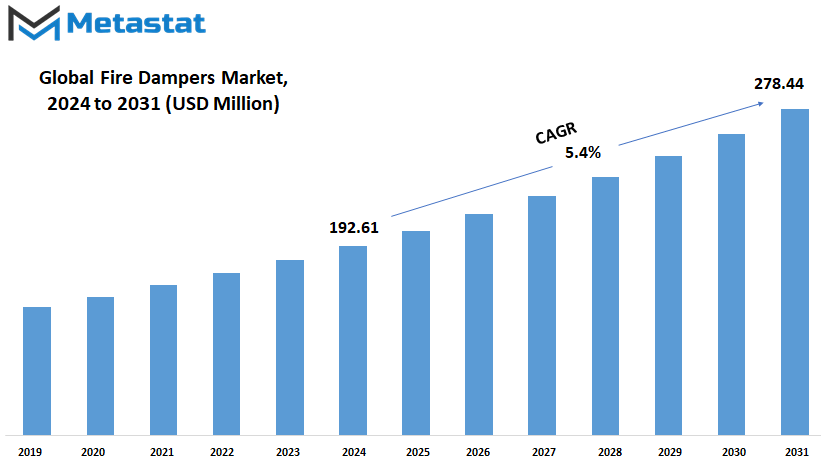
GROWTH FACTORS
The Global Fire Dampers Market is expected to experience significant growth in the years ahead, given the confluence of regulatory pressure, expanding infrastructure, and technological development. As governments around the world impose stricter fire safety regulations, there is growing pressure to ensure that both commercial and residential buildings are equipped to handle fire-related emergencies. An added demand for fire safety measures includes fire dampers, which prove to be extremely crucial in checking the spread of fire and smoke through ventilation. Building codes give more importance to advanced safety measures, thus helping to create an excellent base for the market.
The construction boom has also made the need for modern HVACs, which incorporate updated safety requirements, more common. As the rate of urbanization progresses rapidly worldwide, new residential centers, office hubs, and factories are coming under construction at lightning speed. To these structures all of them generate the need to have effective safety from fire also thereby creating significant demand. Other challenges do not go away so easily, potentially hampering business growth.
The installation and maintenance costs for fire dampers are pretty high, and therefore, might act as a deterring factor to some users who might otherwise opt for these dampers in areas where there is little investment in safety-related equipment. Poor awareness and understanding of fire safety standards might limit the penetration level in certain geographies.
These factors notwithstanding, the future prospects for the Global Fire Dampers Market are quite promising in light of current technological advancements. Modern fire dampers are becoming smarter with advanced designs to increase efficiency and durability. Another feature that is also being added to modern fire dampers is the integration with building management systems. Real-time monitoring and control of safety measures make the system much safer and more user-friendly compared to traditional systems.
These technological breakthroughs in the future will, no doubt open doors for future growth. Spreading awareness concerning fire safety along with unifying regional regulations and uniform standards across the board would drive fire dampers more often into building practices. With enhanced investments in smart buildings by developing as well as developing nations, opportunities would come their way from the side of the manufacturer regarding providing solutions.
Although some problems might momentarily stall this progression, the direction of the market is going to ensure continuous increase in demand with the increased safety consciousness among people in the construction and building management industry.
MARKET SEGMENTATION
By Type
The Global Fire Dampers market is expected to have good developments in the coming years because of technological innovation, stricter safety regulations, and growing awareness about fire safety in commercial, industrial, and residential buildings. As fire dampers are highly essential to use in ventilation and air duct systems intended to prevent flames and smoke spread during a fire, both occupants and buildings may be safeguarded. As the need for increased safety Measures increases, the market is expected to expand across various industries.
Based on type, the market is divided into Mechanical Dampers, Intumescent Dampers, Air Transfer Fire Dampers, and others. Mechanical dampers are expected to lead the way, with a value of USD 119.80 million in 2024. These dampers are widely used because of their reliability and cost-effectiveness. Intumescent dampers with a value of USD 38.98 million are gaining market acceptance as these dampers have the ability to expand under the influence of heat and seal the ducts.
Air Transfer Fire Dampers that can reach as high as USD 24.01 million is becoming popular, which can pass airflow while controlling fire spread. Other specialized forms of dampers valued at around USD 9.82 million cater to certain niches where such specific solutions are required.
Advancements in materials and automation are going to change the Global Fire Dampers market landscape in the coming future. Manufacturers are working on Intelligent dampers equipped with sensors for real-time monitoring and automatic activation in case of emergencies. This will improve both performance and reliability and meet the standards of safety standards that are in constant evolution. Additionally, integration into smart building systems will allow fire dampers to communicate with other fire prevention and HVAC components in a much more holistic way.
Demand for fire dampers will further be fueled by the growing urbanization and industrialization across emerging economies. Governments and regulatory bodies are increasingly mandating the use of fire safety systems in new constructions, which will boost market adoption. Furthermore, retrofitting older buildings with advanced fire safety solutions is expected to create new opportunities for manufacturers and suppliers.
By Operation
The Global Fire Dampers market is important for safety and fire prevention in buildings and industrial environments. Fire and smoke dampers, which limit the spread of fire and smoke through ventilation systems, are increasingly important in modern construction and industrial facilities. The market is expected to grow significantly with the increasing emphasis on fire safety regulations and the development of building infrastructure worldwide.
According to the function or application, operation also categorizes markets into Static Fire Dampers and Dynamic Fire Dampers. In static fire dampers, a fire occurs after a system has halted its movement by air in a system, acting as a barricade preventing a fire from spreading when an HVAC system stops functioning. Dynamic fire dampers are designed for operation in a system where the airflow continues even during a fire event.
The damper has to withstand the pressure and velocity of the air along with the effect of blocking fire and smoke propagation. In the future, the Global Fire Dampers market will see more changes through the development of new technologies and the imposition of more stringent safety measures. Fire dampers will become more efficient and reliable due to the improvement of materials and automation. The fire dampers that are equipped with IoT technology are expected to become smart, thereby enabling real-time monitoring and remote operation. These will not only ensure better safety but also simplify the maintenance process by reducing downtime in critical systems.
With increasing urbanization and the expansion of infrastructure projects, especially in emerging economies, the demand for fire safety measures, including fire dampers, will increase. Government regulations will be the primary driver for the market, as industries and construction companies will be compelled to use advanced fire safety systems. As awareness about environmental impact increases, manufacturers may explore sustainable materials and energy-efficient designs to meet eco-friendly standards.
In the Global Fire Dampers market, increased investment in R&D is likely to add growth. Here, compact versatile designs suitable for varied applications within residential, commercial, and industrial environments will dominate the focus of producers. Co-op between the providers of technologies and manufacturers of fire safety equipment are likely to provide new avenues of opportunities where even more custom-made solutions could be provided.”.
Therefore, the Global Fire Dampers market has a positive future, sustained by the exigency of strengthened fire safety procedures and continuous scientific advancements. Further innovation and flexibility in the path of global norms will make it an important safeguarding agent against life and material loss in times to come.
By Installation
The Global Fire Dampers Market continues to be a critical market in ensuring safety across various industries. Fire dampers are necessary components used for preventing the spread of fire through ventilation systems and are gaining increasing importance as more stringent safety regulations evolve worldwide. As a market increasingly concerned with safeguarding lives and property, it is expected to expand in innovation as well as scope, especially when new technologies and better materials become available. According to installation, the market can be classified into horizontal and vertical installations that have particular architectural and functional applications.
Horizontal installations are applied for areas where the air ducts are aligned parallel to floors. These dampers are very important in large commercial buildings, hospitals, and educational institutions to ensure fire containment across vast areas. The vertical installations are mounted in ducts running perpendicular to floors, which is critical protection in multi-story buildings. Both types of installations are necessary to meet the diverse structural needs, and their adoption will likely increase as urban development projects continue to rise globally.
Advancements in automation and smart technologies will positively impact the market going forward. Fire dampers are increasingly integrated with building management systems, thereby providing real-time monitoring and quick response during emergencies. The move towards smart fire safety solutions is thus driven by a trend towards intelligent infrastructure in contemporary construction projects. Further, green building certifications will increasingly make their way into mainstream projects, leading to a heightened demand for fire dampers designed with eco-friendly and energy efficiency.
The other strong thrust behind the market growth is fast-paced urbanization in developing economies. Construction booms in Asia-Pacific and different parts of the Middle East and Latin American region create demand for fire dampers, especially in high-density population regions and infrastructure projects in these locations. Countries/regions in these areas enforce stringent safety codes by government or regulatory bodies, thereby increasing demand for reliable fire protection systems further.
The future of the Global Fire Dampers Market is bright as manufacturers are focused on improving product durability and performance. Materials innovations, such as corrosion-resistant metals and fire-retardant composites, will likely play a pivotal role. The market will be able to cater to a wide array of building designs by addressing the unique requirements of horizontal and vertical installations, while safety and sustainability are at the forefront. This development is actually an indicator that fire dampers have become even more essential and vital to any building's current safety systems.
By End-Users
The Global Fire Dampers market is a vital component of the safety industry, providing solutions that prevent fire from spreading through different structures. Fire dampers are critical to the protection of lives and property because they maintain the integrity of fire-rated barriers and ensure that flames and smoke are confined to designated areas. This market is to grow substantially over the next couple of years because of technological growth, increasing awareness towards safety regulations, and investment across various sectors.
The growth driver for this market is the increase in global attention to fire safety regulation and codes. Governments and other regulatory bodies worldwide have implemented strict regulations to ensure buildings, whether they are residential, commercial, or industrial, possess reliable fire safety systems. As the construction industry is growing, especially in developing regions, the demand for fire dampers is likely to increase rapidly.
In residential buildings, the use of these devices is becoming more common as homeowners expect greater safety and adherence to modern fire standards. Advanced fire dampers are also being integrated into smart building technologies, making these products more adaptable and efficient.
Fire dampers are highly important in commercial buildings, which include offices, shopping centers, and healthcare facilities. The need for large-scale safety systems in such spaces makes this segment a significant contributor to the Global Fire Dampers market. Similarly, industrial buildings, including factories and warehouses, require robust fire safety measures due to the presence of flammable materials and high-risk machinery. Investments in fire prevention systems in industrial premises are expected to increase with increasing automation and more infrastructure expansion from industries.
In addition to land-based construction, the marine construction sector further boosts the demand for fire dampers. Specific risks of fire hazards on ships and offshore structures require fire dampers for maintaining safety in enclosed spaces. There is also emerging demand in less than conventional applications, which falls under “Others,” such as schools and transportation centers.
The future of the Global Fire Dampers market holds promise, particularly with IoT-enabled dampers as a rapidly advancing technology. These advancements in performance, monitoring, and maintenance will help guarantee a safer environment across all sectors. With an ever-increasing concern for safety worldwide, this market will stay at the very heart of fire protection systems that meet diverse needs while adapting to modern challenges.
|
Forecast Period |
2024-2031 |
|
Market Size in 2024 |
$192.61 million |
|
Market Size by 2031 |
$278.44 Million |
|
Growth Rate from 2024 to 2031 |
5.4% |
|
Base Year |
2022 |
|
Regions Covered |
North America, Europe, Asia-Pacific Green, South America, Middle East & Africa |
REGIONAL ANALYSIS
The global fire dampers market is majorly influenced by its regional segments, as each segment is crucial in the development and growth of this market. Geographical segments thus point out how varied economic conditions, technological progress, and regulations can contribute to market growth. Further analysis of these regions provides insights into distinctive trends and opportunities that may be pivotal in determining the future course of this market.
North America, which includes the U.S., Canada, and Mexico, has been a significant contributor to the fire dampers market for years. The region's focus on strict safety regulations and the steady growth of commercial and residential construction projects have increased demand. The U.S. is expected to continue to lead the market due to advanced building codes and the widespread adoption of smart building solutions. The region will continue prioritizing fire safety in infrastructure developments, which might further spur advancements in fire damper technology toward further growth.
The UK, Germany, France, and Italy are key European countries in furthering the development of the market. European states are well regarded for their highly stringent safety aspects and their tendency to follow highly energy-efficient constructions. These points have, accordingly, been of great facilitative influence for higher adoption of these advanced fire dampers. Further, government incentives for green construction practices will add to the growth of market demand in the region. Modernization and retrofitting of old structures also give a steady source of growth.
Asia-Pacific is another significant region, with substantial market potential. Rapid urbanization and industrialization are taking place in countries such as India, China, Japan, and South Korea, where fire safety measures are needed to be improved. The construction of new smart cities and large-scale infrastructure projects in the region is expected to generate a considerable need for fire dampers. China and India, in particular, stand out due to their large populations and booming construction sectors. As these countries continue to develop, the demand for reliable and efficient fire safety systems is projected to grow rapidly.
The key emerging markets are South America, including Brazil and Argentina, as well as the Middle East & Africa. Both these regions show an increase in construction activities as well as fire safety awareness and, therefore are expected to support demand. Middle East is now focused on creating world-class infrastructure and, thereby, fire safety is a must. Africa has growth in its urbanization and industrial expansion.
Overall, the global fire dampers market will likely see significant advancements as these regions adapt to new technologies and regulatory changes, ensuring fire safety in diverse environments.
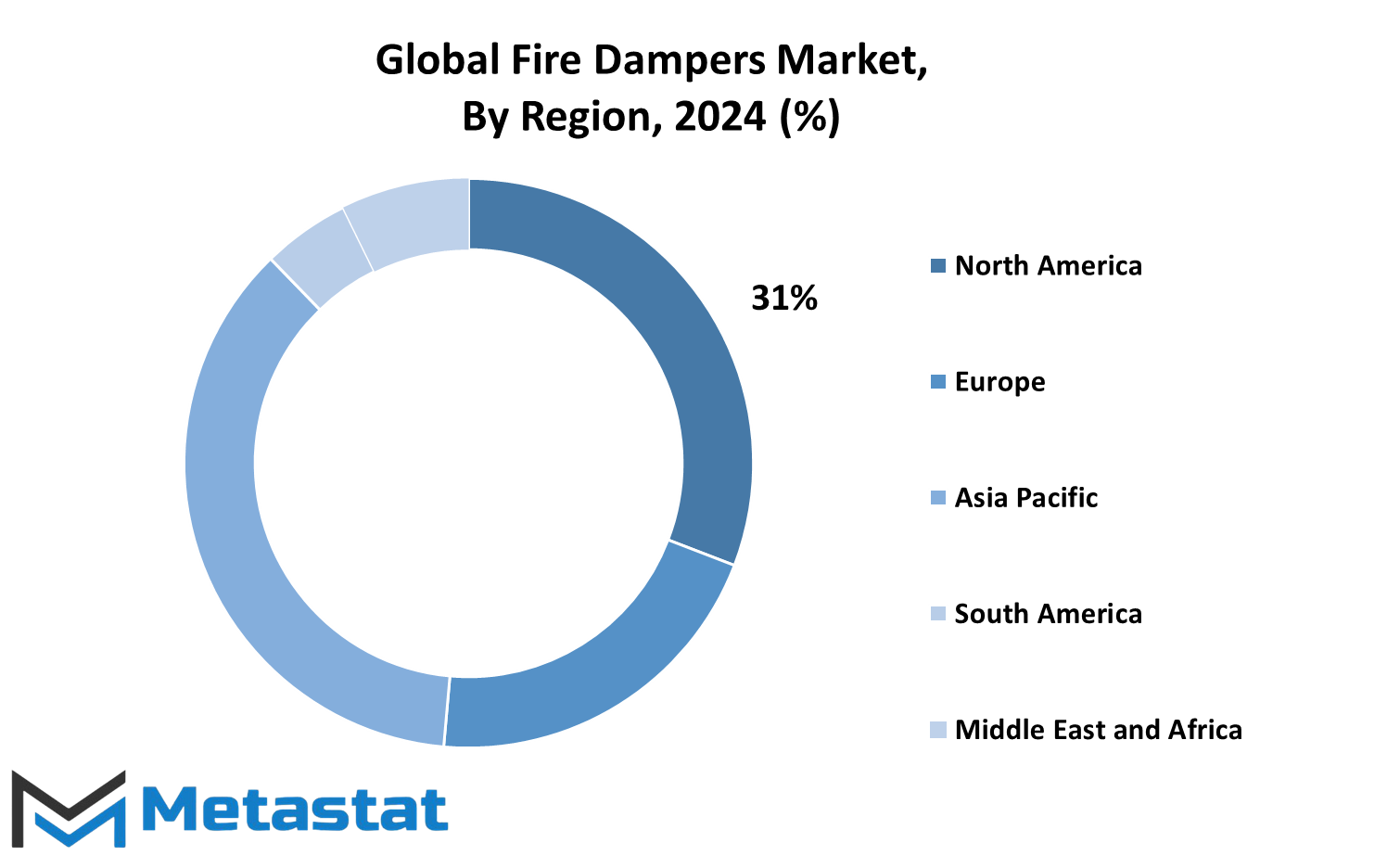
COMPETITIVE PLAYERS
The Global Fire Dampers market is growing significantly in light of increased awareness regarding fire safety standards and the enforcement of stringent building regulations across the globe. Dampers are highly crucial to prevent the spread of fire and smoke through ductwork in buildings and save the occupants from real danger and reduce property damage. Technology advancement and increased demand for energy-efficient infrastructure lead to continued growth in the market for the coming years.
There are several companies that are competing to provide high-quality fire dampers, using innovative designs and materials to meet diverse industry requirements. Key players like Lloyd Industries, Ruskin Company, and Greenheck Fan Corporation have established themselves as leaders in the sector by consistently delivering reliable and efficient products. Similarly, Nailor Industries and Halton Group have heavily invested in research and development to introduce advanced fire dampers that cater to both commercial and residential markets. Other notable contributors like Systemair AB, Trox GmbH, and FläktGroup are also enhancing their product portfolios to meet evolving safety standards and customer expectations.
The increased interest in smart buildings and the introduction of automated systems is likely to push fire dampers to more innovative heights. Swegon Group and Aldes Group, among others, are looking to leverage the scope for smart integration to monitor and control fire dampers in real time. The overall theme of digitalization is changing industries to make them more efficient and responsive, which also applies to fire safety systems. Meanwhile, BSB Engineering Services and Air Management Inc. would concentrate on increasing geographic reach and enhancing the supply chain to provide affordable solutions.
The future prospects for the global market of fire dampers look very optimistic as both government and private players are investing much in ensuring that fire safety measures are undertaken at the grassroots level in urban development projects. Improved investments in infrastructural development projects across emerging markets would also result in new scope for manufacturers in order to establish themselves in different geographies. Eco-friendly products being used more often in sustainable construction practices further facilitate the advancement of the industry in the upcoming times.
As the competitors increase, Mestek Inc. and others are likely to differentiate themselves by becoming customer-centric and customized solutions suppliers. The market would be governed based on the trends that are coupled with the collaboration between manufacturers and regulatory bodies with the industry stakeholders in addressing emerging challenges and sustains safety standards very high. Such collective efforts will ensure that the Global Fire Dampers market remains strong and ready for the future requirements.
Fire Dampers Market Key Segments:
By Type
- Mechanical Dampers
- Intumescent Dampers
- Air Transfer Fire Dampers
- Others
By Operation
- Static Fire Dampers
- Dynamic Fire Dampers
By Installation
- Horizontal Installation
- Vertical Installation
By End-Users
- Residential Buildings
- Commercial Buildings
- Industrial Buildings
- Marine
- Others
Key Global Fire Dampers Industry Players
- Lloyd Industries
- Ruskin Company
- Greenheck Fan Corporation
- Nailor Industries
- Halton Group
- Systemair AB
- Trox GmbH
- FläktGroup
- Swegon Group
- Aldes Group
- BSB Engineering Services
- Air Management Inc.
- Mestek Inc.
WHAT REPORT PROVIDES
- Full in-depth analysis of the parent Industry
- Important changes in market and its dynamics
- Segmentation details of the market
- Former, on-going, and projected market analysis in terms of volume and value
- Assessment of niche industry developments
- Market share analysis
- Key strategies of major players Emerging segments and regional growth potential



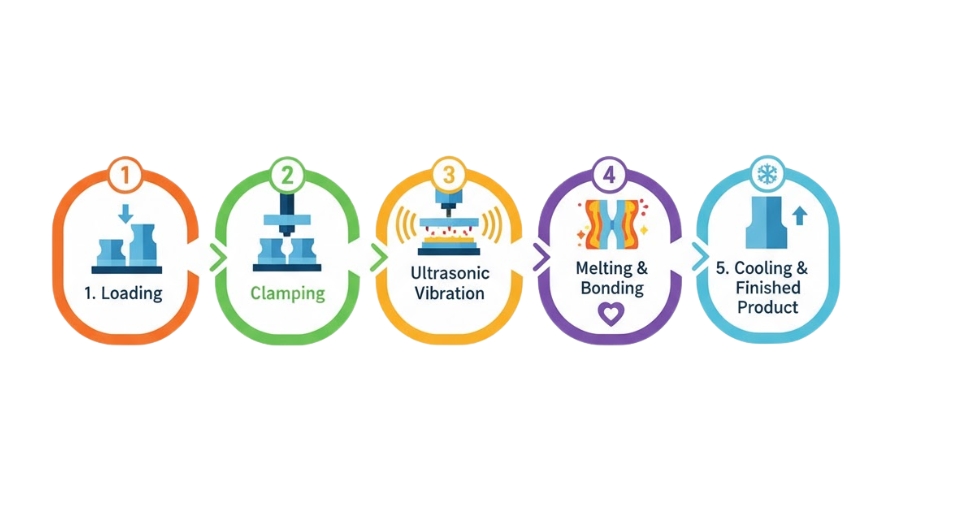
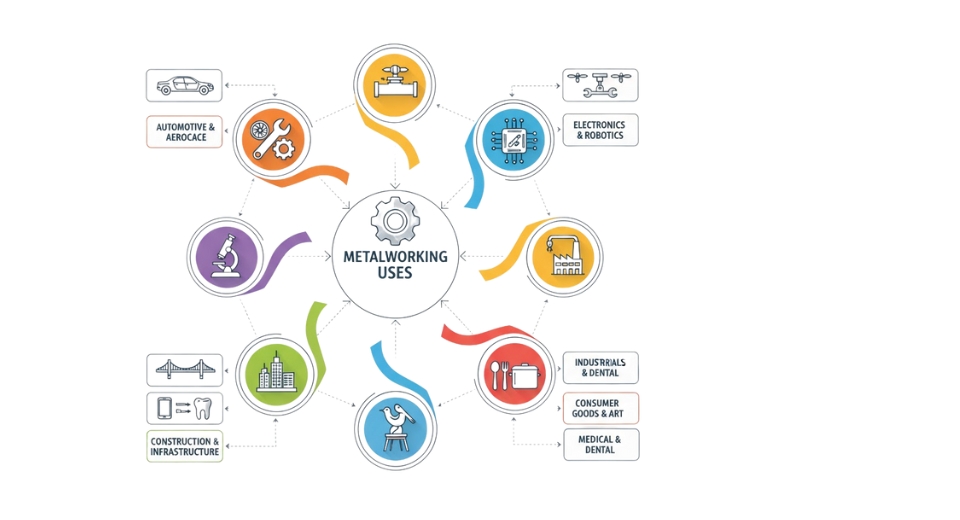
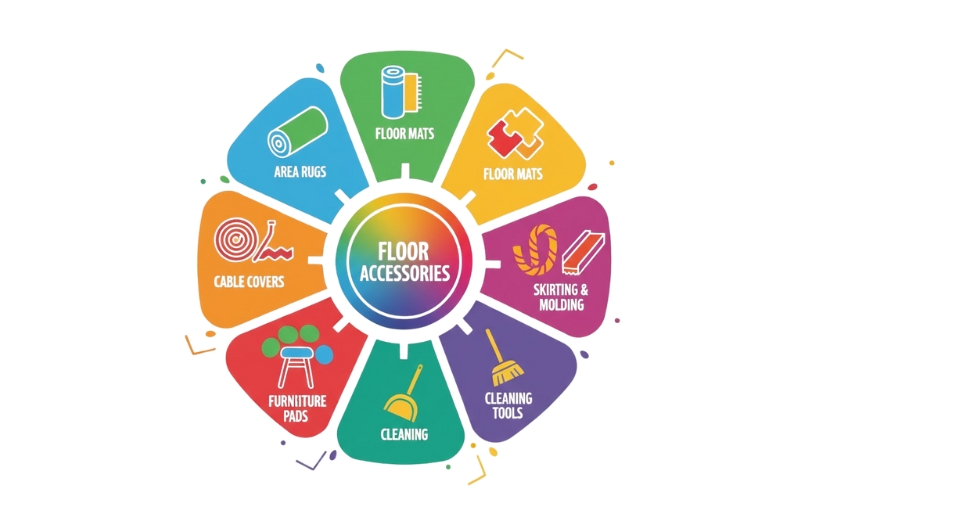
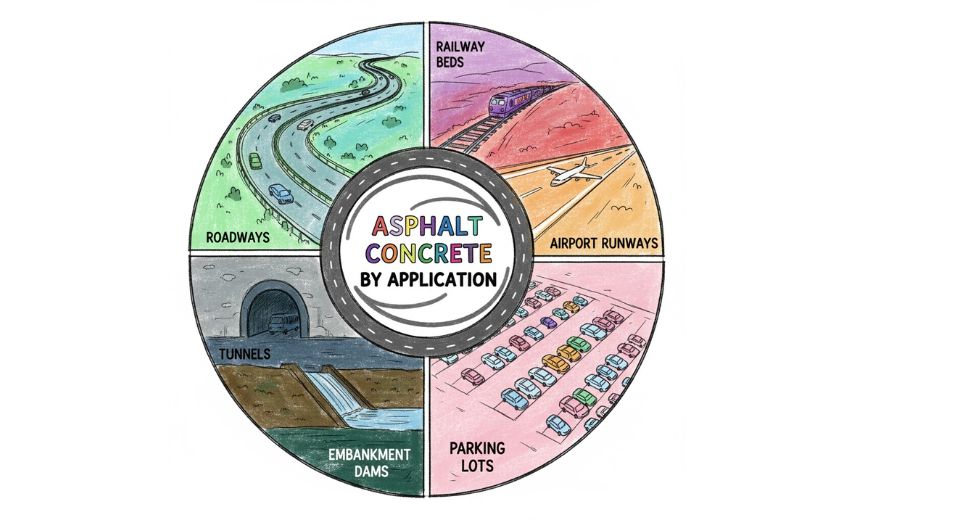

 US: +1 3023308252
US: +1 3023308252






